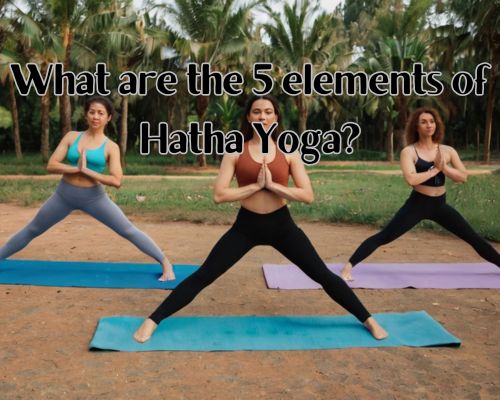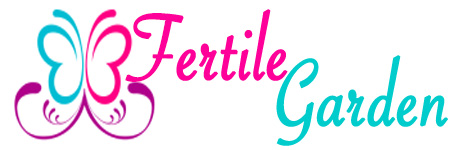What Are the 5 Elements of Hatha Yoga?
Hatha Yoga, an ancient and transformative discipline, is more than just a physical practice. It is a path to harmony, combining movement, breath, and focus to create balance in both body and mind. Rooted in India’s rich cultural heritage, Hatha Yoga has now found global resonance, including a growing community of practitioners in Australia. Whether you are new to yoga or deepening your practice, understanding the five essential elements of Hatha Yoga can unlock its true potential.

In this article, we’ll explore these five foundational elements of Hatha Yoga, their significance, and how they are incorporated into classes and yoga retreats across Australia.
1. Asanas (Postures): The Physical Foundation
Asanas form the cornerstone of Hatha Yoga, involving a series of physical postures designed to strengthen, stretch, and align the body. These postures are not just for flexibility; they are tools for self-awareness and discipline. In Australia, yoga studios, see https://bikramyogamornington.com.au/, often tailor Hatha classes to cater to various levels, from beginners to advanced practitioners.
Popular poses include:
- Downward Dog (Adho Mukha Svanasana): Improves flexibility and circulation.
- Mountain Pose (Tadasana): Enhances balance and posture.
- Tree Pose (Vrikshasana): Strengthens core and concentration.
For Australians leading active lifestyles, regular practice of asanas can help alleviate stress, improve posture, and support overall well-being.
2. Pranayama (Breath Control): Mastering the Breath
The second element of Hatha Yoga is pranayama, which focuses on controlling the breath to influence energy and mental clarity. The term “prana” refers to life force, and “yama” means regulation or control. Through rhythmic breathing techniques, practitioners learn to calm the mind and rejuvenate the body.
A few common pranayama techniques include:
- Nadi Shodhana (Alternate Nostril Breathing): Promotes balance and mental clarity.
- Kapalabhati (Skull Shining Breath): Boosts energy and detoxification.
- Ujjayi (Victorious Breath): Improves focus during asanas.
Across Australia, yoga retreats in serene locations like Byron Bay or the Blue Mountains often emphasize pranayama practice, utilizing nature’s tranquility to enhance its effects. These techniques are particularly beneficial for managing stress and promoting mindfulness in today’s fast-paced world.
3. Shatkarma (Cleansing Practices): Detoxifying the Body
Shatkarma, the cleansing techniques of Hatha Yoga, are designed to purify the body and mind. These practices prepare the practitioner for deeper meditation and self-awareness by removing toxins and blockages.
The six primary shatkarmas include:
- Neti (Nasal Cleansing): Clears nasal passages for better breathing.
- Dhauti (Digestive Tract Cleansing): Detoxifies the digestive system.
- Kapalabhati: Overlaps with pranayama but also serves as a cleansing practice.
In Australia, modern adaptations of these practices are often integrated into wellness programs. For instance, nasal cleansing through neti pots has become popular among those dealing with allergies, particularly in regions like Perth and Adelaide, where pollen and environmental allergens are prevalent.
4. Dhyana (Meditation): Finding Inner Stillness
Meditation, or dhyana, is the heart of Hatha Yoga, allowing practitioners to quiet the mind and achieve inner peace. In today’s digital age, where distractions abound, meditation is a crucial tool for fostering mental clarity and emotional stability.
Techniques used in Hatha Yoga meditation include:
- Focused Attention: Concentrating on the breath or a mantra.
- Body Scan Meditation: Promoting relaxation by observing bodily sensations.
- Mindfulness Meditation: Cultivating awareness of the present moment.
Yoga studios in Australia, see https://bikramyogamornington.com.au/, offer guided meditation sessions as part of Hatha Yoga classes. These sessions provide a haven for those seeking relief from the pressures of urban living.
5. Bandhas and Mudras: Harnessing Energy
The final element of Hatha Yoga involves bandhas (energy locks) and mudras (gestures), which are techniques used to channel and direct energy within the body.
- Bandhas: Help regulate energy flow. For instance, the Mula Bandha (Root Lock) strengthens pelvic muscles and grounds energy.
- Mudras: Symbolic hand gestures that enhance meditation and focus. The Anjali Mudra (prayer position) is one of the most recognized gestures in yoga practice.
In Australia, incorporating bandhas and mudras into yoga practice is gaining traction, particularly among those seeking to deepen their spiritual connection and energy awareness. Workshops focusing on these advanced techniques are often conducted in tranquil settings such as the Sunshine Coast or Tasmania.
Hatha Yoga in Australia: A Growing Wellness Trend
Hatha Yoga’s comprehensive approach to wellness has made it increasingly popular in Australia. From yoga festivals in Byron Bay to specialized Hatha classes in Darwin, Australians are embracing this ancient practice to enhance their physical and mental health.
Moreover, the inclusivity of Hatha Yoga makes it suitable for all age groups and fitness levels. Whether you’re attending a beachfront yoga retreat or practicing in the comfort of your home in Hobart, the five elements of Hatha Yoga provide a blueprint for achieving balance and harmony.
Why Practice Hatha Yoga?
The benefits of Hatha Yoga go beyond physical fitness. Regular practice can help:
- Reduce anxiety and stress.
- Improve sleep quality.
- Enhance flexibility and strength.
- Promote mindfulness and focus.
In Australia, where active lifestyles and outdoor activities are celebrated, Hatha Yoga complements the nation’s health-conscious culture. Whether practiced in a bustling city or the serene Australian outback, its principles remain timeless and universally beneficial.
Finding the Right Hatha Yoga Class in Australia
If you’re ready to experience the transformative power of Hatha Yoga, there are countless options across Australia. Look for studios or instructors that emphasize the five core elements and offer a balanced approach to asanas, pranayama, shatkarma, dhyana, and energy practices.
Popular locations to explore include:
- Sydney: Home to diverse yoga studios offering tailored Hatha classes.
- Melbourne: Known for its vibrant yoga community and workshops.
- Gold Coast: Ideal for combining yoga with beachfront relaxation.
Conclusion
Hatha Yoga’s five foundational elements—Asanas, Pranayama, Shatkarma, Dhyana, and Bandhas/Mudras—offer a holistic path to wellness, both physically and mentally. As Australians continue to embrace this ancient practice, its benefits resonate deeply with those seeking balance in their busy lives.
Whether you are a beginner or an experienced yogi, integrating these elements into your routine can help you unlock Hatha Yoga’s full potential. So, roll out your mat, take a deep breath, and begin your journey toward harmony and self-discovery today.
By creating an insightful connection between these elements and the Australian way of life, this article not only answers “What are the 5 elements of Hatha Yoga?” but also provides practical guidance for incorporating these practices into daily living. If you’re in Australia, there’s no better time to start exploring the world of Hatha Yoga!
